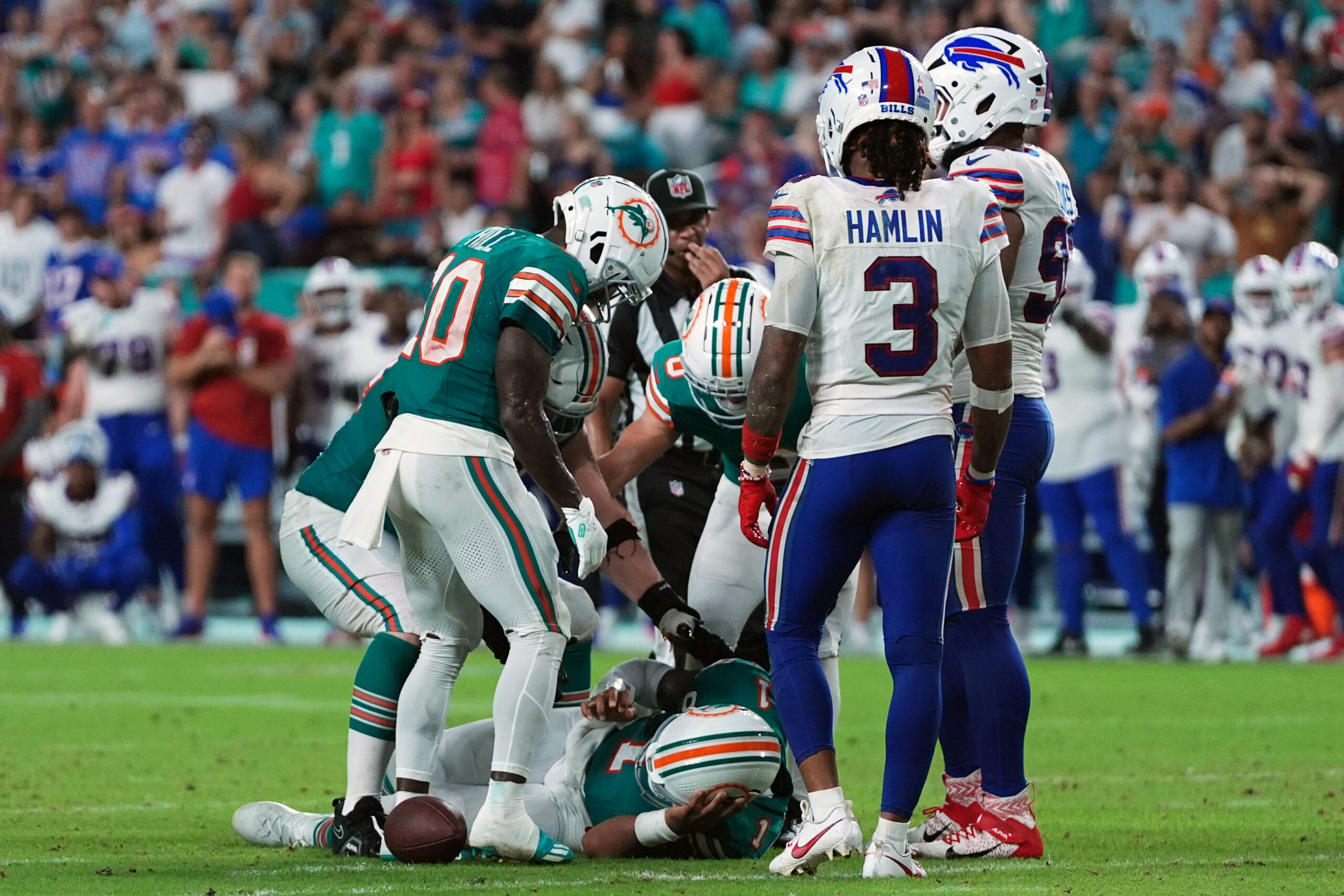

The NFL’s concussion protocol is a hot topic of discussion. Josh Allen didn’t have his best performance in the Buffalo Bills’ 23-20 Week 5 loss to the Houston Texans, but by the end of the game, people were questioning whether he should’ve been on the field at all.
In the fourth quarter, Allen seemed to suffer a head injury when he hit the ground hard after being sacked on third-and-8. His head bounced off the turf, and he stayed down before medical staff came to assist him.
He eventually walked off on his own and later returned to the game. However, many began to question the NFL’s concussion protocol when Allen, just five plays after the injury, was back leading the Bills.
Here’s a breakdown of what you need to know about the NFL’s concussion protocol.
The NFL concussion protocol outlines five steps that players must follow after a concussion before they can return to the game.
If a team’s medical staff suspects that a player could have a concussion, they are required to pull the player from the game for a focused neurological exam. This exam checks the player’s cervical spine, speech, movement, and eye responses. If the player shows any signs of losing consciousness, motor instability, confusion, or amnesia, they are not allowed to continue playing.
When a player displays symptoms of a concussion, the protocol is triggered by the person who identifies those signs. The player is then taken to the sideline for an assessment. They’re checked for any “no-go” symptoms like “loss of consciousness, gross motor instability, confusion, amnesia, fencing response, or impact seizure.” After Tua Tagovailoa’s injury in 2022, ataxia, which refers to issues with balance, motor coordination, or speech caused by neurological problems, was also added to the list of no-gos. If any of these symptoms are present, the player is not permitted to return to the game.
If there are any doubts about a concussion, a team doctor or an unaffiliated neurotrauma consultant must examine the player. The protocol starts if the medical professionals believe the player has suffered a concussion. The player will then undergo follow-up exams and periodic checks by the medical team, and they cannot return to play during this period.
Players will be taken out of the game and examined if they display symptoms like dizziness, nausea, or sensitivity to light and sound. If any of the following “no-go” symptoms are noticed, the player is sidelined for the rest of the game:
The “no-go” list was updated after Miami Dolphins quarterback Tua Tagovailoa was taken off the field on a stretcher following his concussion against the Bengals in 2022.
Once a player is placed in the concussion protocol, they must complete the return-to-participation program, which is divided into five phases:
If a player doesn’t show any of the “no-go” symptoms, the decision to progress through each step of the concussion protocol is made by the team physician, in coordination with an unaffiliated neurotrauma consultant on the sideline.
READ MORE: Jevon Holland suffers broken hand injury during Dolphins’ win over Patriots, expected to miss time